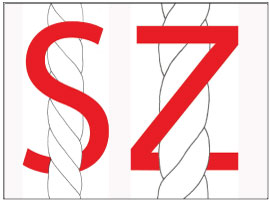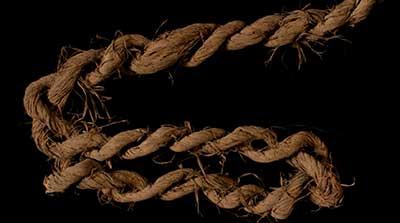Among the objects recovered from this shelter were large sections of ceramic vessels and a variety of textiles and cordage fragments. The latter illustrated the richness and diversity of Native textiles.
Textile examples ranged from finely spun and woven fabrics to coarse, unprocessed fiber formed into crude knots. The complexity and fineness of some of the cordage reflected the skill needed and the expenditure of time necessary to produce them. More coarsely woven objects reflected expedient production and use.

All of the textiles were weft-twined. Twining is a type of weaving that does not require a loom, Native weavers passed paired horizontal elements (wefts) around stationary vertical elements (warps). In between each warp, the paired wefts made a half-twist around one another.
Cordage twist direction at the Spring Branch Rockshelter was evenly divided between S- and Z-twist. One textile fragment exhibited both. At most ancient Native sites, one twist direction predominates, as textile production techniques are often passed down from mother to daughter. Some people who camped at the shelter had been taught to S-twist the raw fibers. Others had been taught to twist it in the opposite direction. This suggested to researchers that spinners with different twist traditions had periodically occupied the site.
